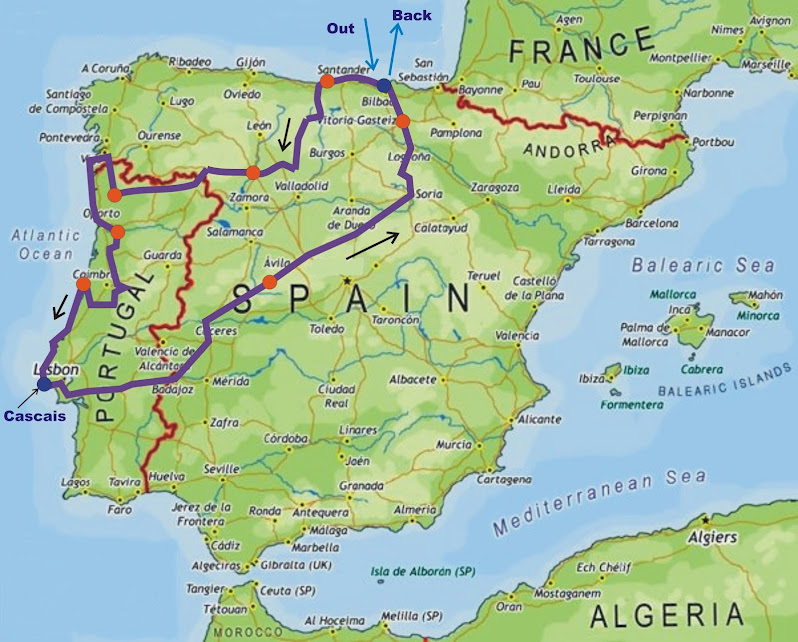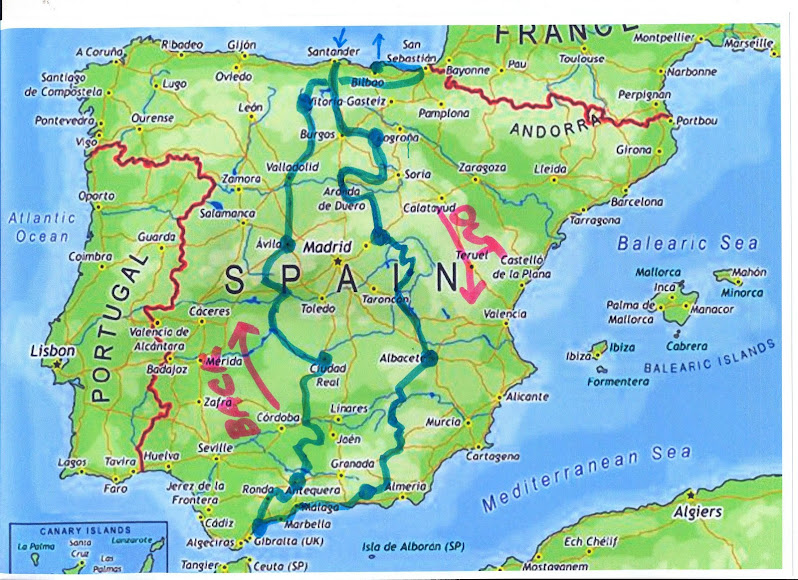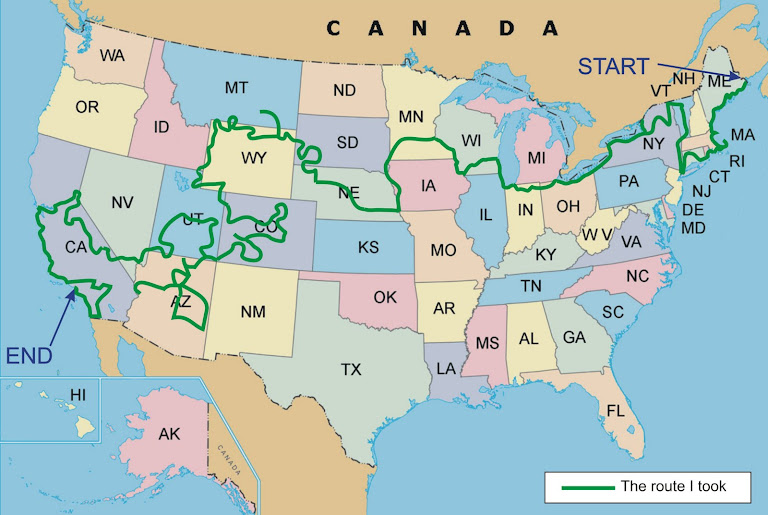Sometimes, somebody comes up with an idea that sounds good at the time.
I am not sure this was one of those times....
Sunday 27 January 2013
Wednesday 23 January 2013
A bad road?
We all love posting about some of the great roads we have ridden. But what about the worst road?
A road may be straight, it may be boring, or it may be dangerous. What is your worst road and why? I challenge you to find a road worse than this.....
This is mine. It is very close to where I live and is only wide enough for a single car at a time. Often wet, both sides of the road have horrendous potholes and the middle is full of loose stones. In short, this public road is really dangerous on a motorcycle, so I am forced to avoid using it.
Share your worst road near you.
East Herts Council, you should be ashamed of this....
A road may be straight, it may be boring, or it may be dangerous. What is your worst road and why? I challenge you to find a road worse than this.....
This is mine. It is very close to where I live and is only wide enough for a single car at a time. Often wet, both sides of the road have horrendous potholes and the middle is full of loose stones. In short, this public road is really dangerous on a motorcycle, so I am forced to avoid using it.
Share your worst road near you.
East Herts Council, you should be ashamed of this....
Friday 18 January 2013
The Printing of my Book
I had the opportunity this week to see my book being printed, so of course, I grabbed that chance with both hands and with my son, Jeremy, we went to the plant of one of the UK’s few large format book printers, Butler Tanner & Dennis.
Located in Frome in Somerset, Butler, Tanner& Dennis have a 166 year printing history and their reception contains a very old printing press used by the firm.
The plant is very large indeed and contains all manner of machines needed for book printing and manufacturing. BT&D proudly claim they are one of just a few companies that do everything under one roof in the production of books. For someone like me that has no experience of or any prior knowledge of printing and making books, the plant is a marvel of machines and looking at most sets up a guessing game of trying to work out what they do. Some of the machines are brand new and a marvel of modern technology, but at the same time, these are used alongside many that are decades old and still work perfectly well today.
The plant is laid out broadly in the order that a book is produced, with incoming materials such as paper at one end and the completed book exit at the other. The paper store is large but paper having come from specialist plants in many countries. Unlike newspaper production, all of the incoming paper is cut into flat sheets, not rolled.
My book was printed on the newest and biggest printing machine in the plant, a Heidelberg, which is capable of printing 15,000 sheets an hour at peak. Yes, you did read that right, 15,000 large format sheets an hour!
At about 12 inches by 12 inches (30cm) mine is a large book, and each of the sheets going through the printer contains 20 pages of my book on each side. The printing of the book pages is therefore done at a phenomenal speed.
This is the machine that makes the plates. They are very thin and made from aluminium. Each sheet going through the printer needs 4 plates (cyan, magenta, yellow and black)....
This is one of the plates ready for printing.....
A close up of part of one of the plates – and a picture of Chris Luhman of Everyday Riding....
The huge Heidelberg printer. With its six printing positions. Just four were being used for my book. The paper gets fed into the far right hand end, passes through the six printing positions and the left hand end is where the printed sheet is dried. The completed sheets are delivered in a neat stack at the left hand end.
The top of the yellow printer. It is hard to see from these pictures just how fast everything happens. This drum is spinning at an incredible speed....
The guys opened the side panel of the drying area, so we could see the sheets going through that part....
A not very good picture of the completed sheets being stacked. It is really just a blur....
The printed sheets measure 63 x 47 inches / 1.6m x 1.2m and each contain 20 pages of my book. Due to the way the sheets are folded into sections of the book, half of the pages are printed upside-down.
Each machine in the plant has a “minder”. This is Julian Keel (AKA Biff) who was looking after the Heidelberg printer. He can adjust many aspects of the print as the machine is working. We watched him run off a couple of stacks of different sheets while we were there and I would say he has a very challenging job....
As each stack of printed sheets is finished, they are moved by a fork lift truck to a waiting area. These are not my stacks, but a book just ahead of mine in the production process....
When the whole book is printed, the large sheets are folded into 2o page book sections by some amazing folding machines. Prior to actually folding the sheet, each is perforated to make the folding flatter. Depending on the size of the individual book pages, these machines need to be set up for each book....
Once each 20 page section of the book has been folded and prepared, these are loaded into a long machine that first stitches the sections and then collates those sections. Each section has a printed mark so the machine can automatically check that the collating has been done properly and all sections are in the correct order....
The collated sections then begin to take the form of a book. These are known as book “blanks” and are stacked ready to be moved to the next part of the production process. Note how the pages are just rough cut at this stage....
On a separate production line, the hardback covers are manufactured. This is still done in the same plant, by a different team. Known in the trade as “cases” these are not for my book, but another just ahead of mine....
Next is a very clever, multi-function machine that brings together the cases with the book blanks, trims the pages to the correct size and glues the book into the base to make the completed book. All that is left after this is to add the dust cover, or “jacket” as the printers call it....
A similar process happens with the softback books, but a totally different machine is used to bring the various parts of the book together....
Quality control is important at every stage of the process, with people having to sign off every part of that process. If they didn’t check each stage until the book was completed, a minor problem in one process would mean rejection of the whole print run. This is where the completed books are checked....
Overall, the visit to the plant was fascinating. Having never before understood how a book is produced it was terrific to see each part of the process. The guy managing the production of my book, Clinton Walker, went out of his way to show us around and explain the process to us. Along with the Key Account director, Jeremy Snell, we were made to feel very welcome and it was clear the team at Butler Tanner & Dennis are excellent at what they do. I am really looking forward to seeing the end result.
When the book is finalised, they need to be shipped to the various supply locations and then we will be ready to go, in time for the book launch on 4th march.
Labels:
Book,
France,
France In America,
Harley,
Motorcycle,
Road Trip,
Touring,
USA
Wednesday 9 January 2013
Time is running out.
A little while ago, I reminded my readers that they could get a free copy of my soon-to-be-published book called France-In-America. All you needed to have done to qualify for a free copy was to have been one of those people that commented on my blog while I was on my road trip across the USA.
I have had many people sending me their postal address (to gary@garysfrance.com) so I can send the book, but I am yet to hear from some of the people who commented the most.
So, time is running out. Some of my readers really encouraged me to keep posting about my trip due to the many comments they were making. One person made just one comment on my blog and I am happy to send that person a free book, but I am not happy that I am yet to hear from some of the people that really deserve one. It is you that I want to say thank you to, so if you'd like a copy, send me your address!
I need it by 14th January.
I won't be asking again.....
I have had many people sending me their postal address (to gary@garysfrance.com) so I can send the book, but I am yet to hear from some of the people who commented the most.
So, time is running out. Some of my readers really encouraged me to keep posting about my trip due to the many comments they were making. One person made just one comment on my blog and I am happy to send that person a free book, but I am not happy that I am yet to hear from some of the people that really deserve one. It is you that I want to say thank you to, so if you'd like a copy, send me your address!
I need it by 14th January.
I won't be asking again.....
Wednesday 2 January 2013
The Top 5 US roads
I recently read a post on a the American Motorcyclist Association website about which roads in the US had been voted as the top biking roads in the US.
Here are the top five. I am very lucky to have ridden some of them.
Number 1 – The Beartooth Pass.
On the Wyoming / Montana border, this is US Highway 212 which runs 69 miles between Red Lodge in Wyoming and Cooke City in Montana. Rising up to 10,947 feet / 3,337 metres, the road climbs and falls quickly. Even though I rode the Beartooth Pass in August, it was cold and very windy on the top of the mountains, so careful riding was a must. Snow was still on the ground and the temperature had plummeted thanks to the strong winds. The term windchill factor takes on a whole new meaning when you are exposed to the elements on top of a mountain.
Occasionally you hear people say they are “feeling on top of the world.” On Beartooth Pass, I truly felt it was – as the overall impression when looking down from a mountain upon other tall mountains is – quite literally, like being on top of the world. It is a remarkable feeling to stand and gaze out over so much land. The road surface was in tip-top condition and the overall feeling of riding the road was simple – wow. Just wow.
No wonder it was voted as number 1.
Number 2 – The Blue Ridge Parkway
I haven’t ridden this road yet, but it is very close to the top of my list of those I want to do. The road is 469 miles / 755 kilometres long, mainly along the Blue Ridge mountain chain. The road connects the Shenandoah National Park in Virginia and the Great Smoky Mountains National Park in North Carolina. Its construction started in 1936 and took 52 years to complete. Those who have ridden it tell me the scenery is wonderful and the bends sweeping. The parkway is often closed from November to April due to the harsh weather.
Number 3 – The Tail of the Dragon
 |
| Photo by Tim Vines |
From the longest road in the top five to the shortest. At just 11 miles long, you might not think this is much of a road, until you find out it has 318 curves in that short distance. The road is a section of the U.S. Route 129 along the Tennessee - North Carolina Border. Notorious in the biking community, this is one of those roads that people travel a long way to ride. I look forward to riding it one day.
Number 4 – The Million Dollar Highway
Part of US 550, the Million Dollar Highway runs between Silverton and Ouray in Colorado. As it cuts its way through the San Juan Mountains, the 23 mile / 37 kilometre road has many hairpin bends, narrow lanes and steep unprotected drop-offs, which is precisely why it is so exhilarating. There are very few guardrails. Cresting at 11,075 feet / 3,376 metres on Red Mountain Pass, the most exciting part of the road is at its Ouray end, where it passes through Uncompahgre Gorge and the roadway clings to the side of the mountain. One slip here and it would be curtains for sure. The scenery and views are dramatic, which adds to the effect and, of course, the thrill of this exciting road. My video of riding this road gives just a taste of what the road is like.
Number 5 - California State Route 1
I have ridden the main part of this road, between San Francisco and Los Angeles, twice. It is truly spectacular.
Sometimes foggy, this road runs alongside the Pacific Ocean, right next to beautiful beaches and the stunning rocky coast.
Very remote in places, some of the best parts are Big Sur, Santa Cruz, Monterey, Carmel, Santa Barbara and many others. With so much to see and take in, this has to be one of the most relaxing, chilled out roads anyone could ever ride. The ocean has some of the best surfing waves in the world and there are plenty of opportunities to see surfers in action alongside the road.
These are some of the best roads in the USA. Have you ridden any of these and what did you think of them?
Subscribe to:
Posts (Atom)























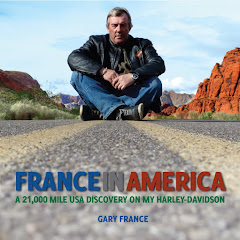


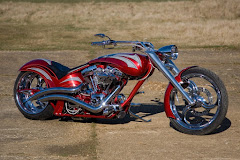





























.jpg)







